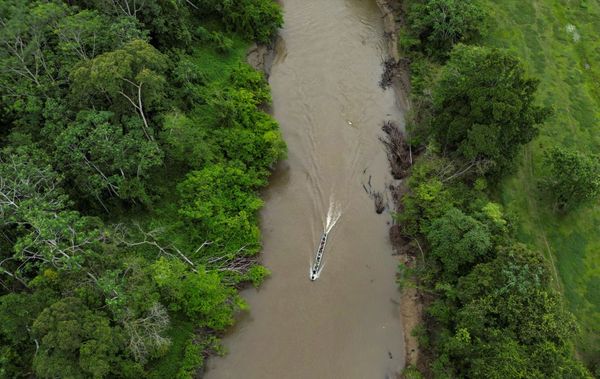
In the 1990s, Australia suffered a meningococcal disease outbreak in three different jurisdictions across central Australia. “They all had different ways of dealing with it, even though in many cases there were members of the same family involved in different states and territories,” says Prof Lynn Gilbert, microbiologist and infectious diseases expert at the University of Sydney. It was back then, she says, that the need for a national disease surveillance and control agency became clear.
The campaign for the creation of a national disease surveillance agency in Australia, similar to the US Centers for Disease Control and Prevention, has been going for three decades and now, after two years of Covid-19 exposing cracks in the federated health system, it’s gathering pace.The Labor party is going into the upcoming election promising to establish an Australian Centre for Disease Control (CDC), and organisations including the Australian Medical Association, Australasian Society for Infectious Diseases and the Public Health Association of Australia all say it is past time for such a body.
The pandemic has highlighted the barriers. Terry Slevin, CEO of the Public Health Association of Australia says the “fractious nature” of Australia’s different jurisdictions has “absolutely tested the system like it’s never been tested before”.
Adelaide GP and federal AMA vice-president Dr Chris Moy has also been frustrated by the lack of consistency in communication between states, territories and commonwealth. “Even though we had Atagi [the Australian Technical Advisory Group on Immunisation] there who were providing good advice, really good people giving good advice, it was the communication of that,” Moy says. The constant changes and mixed messaging – including to medical practitioners about how to deal with potentially Covid-infected patients – caused confusion which Moy says reduced trust in advice from authorities.
The government has considered recommendations to look into national centre for communicable diseases control within the last decade, but in 2018 let go of the idea, arguing that the “national framework” model was better.
“Clearly we need an operational communicable diseases agency,” says Prof Tania Sorrell, infectious diseases physician and co-director of the University of Sydney Institute for Infectious Diseases. But what would that look like? “There are various models, and the actual terminology of what people mean by CDC is not the same in different places.”
The US CDC itself is a massive organisation, with a total budget for 2022 of US$15.4bn, more than 10,000 employees, and in excess of 200 laboratories across the US. Its role is to collect national data on both infectious and non-infectious – communicable and non-communicable – diseases, perform ongoing surveillance, research, diagnostic testing, advise governments, and train the US’s public health workforce. It is funded by the US government but – particularly during the Trump presidency – the agency’s scientific independence was sorely tested.
How should a CDC be formed?
There are a few universally agreed-to items on the wish list for an Australian version of the CDC, and independence from government is high on that list. Gilbert says an Australian disease agency should operate as an independent statutory body free from political interference, but also be transparent in its recommendations, “so that at least the public can see where the politicians are making decisions that differ from what the experts are saying and what the data recommend.”
It also needs to be supported by secure, long-term core funding that’s not subject to the prevailing political winds, Gilbert says. “It should be accountable and open to review but not on a regular basis where it’s all a bit insecure.”

Such an agency should also build on the existing strengths of Australia’s federated public health structure, Sorrell says, rather than scrap it all for a totally centralised model like the US CDC. “New South Wales demonstrated very clearly early on in this pandemic that an established set of networked public health units made it much more readily operational than the centralised systems which were in place at the time in Victoria,” she says. “Covid has demonstrated this really well, that actually where the action is where you need the people, you need the rapid diagnostics and genomics, you need the rapid epidemiology, you need the rapid response.”
In fact, centralisation proved a challenge for the US CDC, particularly early in the pandemic when the organisation restricted Covid testing to only a few accredited laboratories. That, combined with an early problem of faulty test kits, created a bottleneck that resulted in a critical delay in the US response.
Australia already has a strong existing network of state public health laboratories, called the Public Health Laboratory Network, that Sorrell says has performed well, but needs to be strengthened.
Formalising that laboratory network could set collection and reporting standards across the network, and provide a national platform for data sharing, Slevin says. “A CDC can set those national best practice systems … it can do so in cooperation with the states so that such mechanisms are well planned, well accepted, well embedded and adopted and create benefits for everybody in Australia, regardless of what jurisdiction you live in.”
The other key component of a national disease surveillance and control agency would be the epidemiological analysis of laboratory data, the research that informs the public health response at national, state and local level during an outbreak but is also constantly on the lookout for the next disease threat. Australia does have an agency called the Communicable Diseases Network Australia, which sits under the auspices of the federal health department. Its remit is to coordinate and lead public health and “support best practice for the prevention and control of communicable diseases”. It also collects data on what are called national notifiable diseases – diseases considered of enough concern that they need to be monitored – which include everything from anthrax to tuberculosis.

Gilbert, who was involved in establishing the Communicable Diseases Network Australia, says it had done a pretty good job of investigating disease outbreaks in the past, but its ability to respond to the fast-moving pandemic has been hampered by reporting delays and different privacy regulations at the state and territory level.
It’s also not in a position to rapidly analyse and report on outbreaks, Gilbert says. “They learn from it and they write reports but there’s a lot of good information lost with every outbreak investigation.”
The other issue with these existing organisations is that those involved with them do so on their own time, outside existing full-time jobs, Gilbert says. “There’s not nearly enough support specifically, in the way of either administrative secretarial support or technical support, for either committee to do the extra things that they could do and the information that they gather could get added value from.”
This should be the role of the centralised component of a national CDC, says Sorrell: “A centralised authority which is there to really quickly and seamlessly receive laboratory and epidemiological information from the states, and integrate and analyse it at a national level in order to make national decisions.” Such a central authority should also have access to funds for research, which it can distribute quickly as disease issues arise. “One of the things that we’ve seen during the pandemic is that money has been stood up for competitive funding but it’s taken many months for grant applications to be reviewed and funds distributed,” she says.
There are state-based infectious disease research organisations, such as the Peter Doherty Institute for Infection and Immunity in Victoria and the Kirby Institute in NSW, whose epidemiological and modelling efforts have guided state, territory and federal government during the pandemic.
But even Prof Peter Doherty himself says the institution that bears his name serves Victorian public health, and that superficially at least there is a need for a national CDC-like organisation. But he argues that rather than a centralised organisation, Australia needs networked and funded centres of excellence across the states. “The clever way to handle this sort of a situation, from the point of view from Canberra, is to put funding out in a way that while it maybe has its basis in one institution or other – like the ARC research centre of excellence grants – it’s a disseminated thing that draws on excellence in multiple centres across the country,” he says.
Whatever the structure of an Australian CDC, Slevin says the lessons of the pandemic point to a need for a massive investment in Australian health infrastructure to strengthen its ability to predict, detect and respond to future epidemics and pandemics.
“This really is an essential watershed moment for the Australian health infrastructure, and for us to now, unequivocally commit to building the best possible machinery to allow us to go into the coming decades with a greater degree of confidence that we are ready and prepared for whatever might be coming.”







